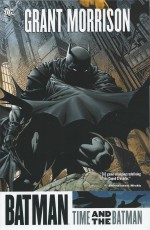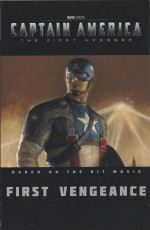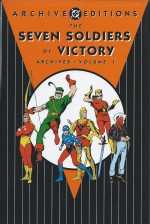
By Kieron Gillen, Richard Elson & Doug Braithwaite with Stan Lee, Jack Kirby, Neal Adams & various (Marvel)
ISBN: 978-0-7851-4638-4
In the middle of 1962, Stan Lee & Jack Kirby launched their latest offbeat superhero creation in monsters-and-mysteries anthology Journey into Mystery #83. The tale  introduced crippled American doctor Donald Blake who took a vacation in Norway only to encounter the vanguard of an alien invasion. Fleeing in terror he was trapped in a cave wherein lay an old, gnarled walking stick. When, in helplessness and frustration, the puny human smashed the cane into a huge boulder obstructing his escape, his insignificant frame was transformed into the hulking and brawny Norse God of Thunder, Thor!
The series grew from formulaic beginnings battling aliens, commies and cheap thugs into a vast, breathtaking cosmic playground for Kirby’s burgeoning imagination with Journey into Mystery inevitably becoming the Mighty Thor where, after years of bombastic adventuring, the peculiarities and inconsistencies of the Don Blake/Thor relationship were re-examined and finally clarified to explain how the immortal godling could also be locked within frail Don Blake.
The epic saga took the immortal hero back to his long-distant youth and finally revealed that the mortal surgeon was no more than an Odinian construct designed to teach the Thunder God humility and compassion…
Time passed; Kirby left and the Thunderer’s fortunes waxed and waned. During the troubled mid-1990’s the title vanished, culled with the Avengers, Iron Man, Captain America and Fantastic Four and subcontracted out to Image Comics instigators Jim Lee and Rob Liefield during 1996-1997 in a desperate attempt to improve sales after Marvel’s apocalyptic Onslaught publishing event.
In 1998 Heroes Return and Heroes Reborn saw those properties rejoin the greater Marvel Universe, relaunched in brand new first issues with the Thunder God reappearing a few weeks later.
After many phenomenal adventures the second volume concluded with issues #84-85 (November-December 2004) which once-and-for-all depicted the Really, Truly, We Mean It End of the Gods and Day of Ragnarok as Thor himself instigated the final fall to end a ceaseless cycle of suffering and destruction, ultimately defeating the ruthless beings who had manipulated the inhabitants of Asgard since time began…
You can’t keep a profitable property down or a great comics character unresurrected, so he was reborn again as a mysterious voice summoned Thor back to life – and Earth (us fans call it Midgard) – in a crack of spectacular thunder. Revived for an unspecified purpose the solitary Lord of Asgard swiftly set about retrieving the souls of his fellow godlings, all scattered and hidden inside human hosts and set up Asgard on Earth a few paltry feet above the ground of Broxton, Oklahoma…
As this small, simple community with some intriguing neighbours increasingly became the focus of cosmic events, expatriate big city doctor Don Blake was corporeally merged with Thor and became the mortal host for the God of Thunder…
What you need to know: trickster god Loki is dead but his legacy of malign machinations continues to affect the earthbound Asgardians as they begin to rebuild their devastated city following an appalling assault by the massed forces of out-of-control American Security Czar Norman Osborn in Siege…
Balder the Brave is the latest leader of the displaced deities but the populace is far from united behind him, with factions forming advocating the accession of Thor or his brother Tyr, God of War. Neither blood-son of lost Odin wants the job or feels worthy of the throne…
When Asgard materialised on Earth, the afterlife realms of Hel and Valhalla were displaced and Hela, caretaker of the dead, allowed Loki to broker a deal which sublet a portion of Mephisto‘s Hell as a home for the wandering Norse dead. Hela feared her phantom charges would become prey to an ancient pre-Asgardian horror which consumed the spirits of fallen heroes, but she was unaware that the dire Disir were also pawns of the turbulent, troubled God of Evil who was her father…
Nor was she privy to the fact that, to seal the deal, Loki had given Mephisto mastery of the voracious, vile and utterly debased Dead-eaters…
Collecting issues #611-614 of Thor (from August to November 2010), this grim fury tale of Hells without a Heaven also includes a classic 3-part saga of Asgardians in the Underworld first seen in Thor #179-181 at the end of the 1960s.
‘The Fine Print’ consists of four chapters scripted by Kieron Gillen, illustrated by Richard Elson & Doug Braithwaite and begins with Thor, Balder and Tyr officiating at a mass pyre for the hundreds who fell in defence of Asgard and Broxton. Meanwhile in Mephisto’s blazing inferno, lesser demons ousted from their hellish lands prepare to oust Hela and her transplanted Hall of Heroes, but are completely eradicated by the Disir – despised proto-Valkyries who served primordial god Bor until they acquired a taste for the flesh and souls of fallen warriors and were condemned for all eternity.
Simply to speak their communal name summons them from eternity to kill and consume. As none has done so in an age, most Asgardians believe them to be myth…
Now, with upheaval in the Realms of the Gods, the horrors are free to sate their insatiable hungers, first upon the demon armies and after on the hallowed Asgardian dead. First, however, they must gain the sanction of their new master Mephisto.
The arch deceiver won’t say yes – but he doesn’t say no either…
When the “Ever-Hungry Ones†raid Valhalla, the only place Hela can turn is to the living world where hopefully flesh and blood still honours the sanctity of the fallen…
In Asgard, Balder is uneasy with his stewardship and seeks comfort in the wisdom of weather goddess Kelda Stormrider, who sacrificed so much – including her mortal beloved Bill and briefly her own life – to defend the kingdom. He is completely unaware what Loki’s magics have made of her now…
When Hela materialises amongst the ashes of the recent dead and begs for aid, she is naturally rebuffed until one foolhardy warrior utters the forbidden name of the damned and is instantly rent to shreds by the terrifying harpies…
Rather than kill them all, Brün of the Disir leaves with a warning: her kind prefers meals seasoned by life’s ending and would prefer to dine on souls that have expired. After all, they are patient and have all the time in the world…
With the weakened Hela only able to carry two warriors, Thor and Tyr ignore their suspicious misgivings and return with her to rescue their departed friends and family. The War God goes with Hela to defend the embattled shades of Valhalla whilst the Thunderer prepares to fight his way across all Hell in search of the sword Eir-Gram, forged by Loki through despicable rite and ritual and the only weapon capable of harming Disir…
The puissant blade is lodged in Mephisto’s Great Hall but Thor wisely chooses to force his way to it rather than accept a sly offer of assistance from the Tempter to simply collect it…
Ferocious, grandly scaled, truly epic and astoundingly clever, this is a superb tale of operatic tone and proportions, full of twists and turns and surprises that adds volumes to the modern mythology of the Thunder God and will delight fans of comics and the cosmic.
This dark and brutal tome continues with a masterful changing of the guard and sign of the times which originally appeared in Thor #179-181, August to October 1970.
In #179 ‘No More the Thunder God!’ saw Thor, Sif and Balder dispatched to Earth to arrest Loki. This story was Kirby’s (and inker Vince Colletta’s) last: the entire vast unfolding new mythology was left on an artistic cliffhanger as the Thunder God was ambushed by his wicked step-brother who used infernal magic to trade places with his shining-souled half-brother…
By switching bodies, the Lord of Evil gained safety and the power of the Storm whilst Thor was doomed to endure whatever punishment Odin decreed…
‘When Gods Go Mad!’ introduced the totally different style of Neal Adams to the mix, inked by the comfortably familiar Joe Sinnott, as the true Thunder God was sent to Hell and the tender mercies of Mephisto, whilst on Earth Loki used his brother’s body to terrorise the UN Assembly and declare himself Master of the World…
In #181 ‘One God Must Fall’ Sif led Warriors Three Fandral, Hogun and Volstagg on a rescue mission to the Infernal Realm, whilst Balder struggled to combat the combined power of Thor and malice of Loki, until Mephisto was finally thwarted and a cataclysmic battle of brothers on embattled Earth set the world at last to rights.
Dark, brooding and ferocious, this is a breathtaking Costumed Drama that will enthral and delight fans of both comic and filmic Asgardian iterations which also includes covers and variants by Mico Suayan, Laura Martin, Adams, Sinnott, John Romita Sr., Marie Severin, John Buscema & Chris Stevens plus a beautiful selection of pencilled original art by Braithwaite.
© 1970, 2010 Marvel Characters, Inc. All Rights Reserved.












